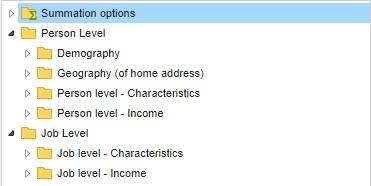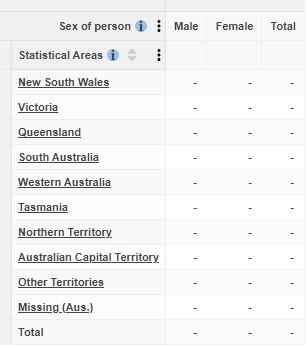Geography
All geographic information in the LEED is based on a person’s home address as reported on their Individual Tax Return form. Addresses are coded to the 2021 Australian Statistical Geography Standard, which details Statistical Areas, Local Government Areas, State Electoral Divisions and Commonwealth Electoral Divisions. Information is also available for the Socio-Economic Indexes for Areas decile of a person's Statistical Area Level 2 (SA2) region. If a geography variable is missing, if possible it is imputed from the individual's most recent Pay As You Go (PAYG) payment summary.
Industry
Industry is available at Broad and Fine levels (Industry divisions, subdivisions, groups and classes). Industry information is either provided by the Australian Business Register or determined through the profiling process. An entity is classified to an industry using the Australian and New Zealand Standard Industrial Classification.
Occupation
Occupation of main job is classified by Occupation type and Skill level. Occupation classifications refer to the collection of jobs sufficiently similar in title and tasks, skill level and skill specialisation. A person's occupation is identified from the main job on their individual tax return, which is defined by the Australian and New Zealand Standard Classification of Occupations.
Migrants
The Migrant data used in LEED are sourced from the Person Level Integrated Data Asset (PLIDA). The Migrant data are a suite of administrative datasets (visa grants and settlements database) from the Department of Home Affairs. These data pertain to permanent migrants and temporary entrants to Australia, as well as Australian citizens who have travelled into or out of Australia. For more information on the migrants' variables in this TableBuilder product, see the Jobs in Australia and Personal Income in Australia methodologies.
Missing
The Missing category represents the number of incomplete records for which the data items are not present. The underlying data of the LEED has a high rate of missing variables due to administrative tax data constraints and the linking and imputation processes.
Not applicable
The Not applicable category generally represents the population excluded from a derived data item. For example, the maximum number of concurrent jobs is not applicable for people without a second job.

